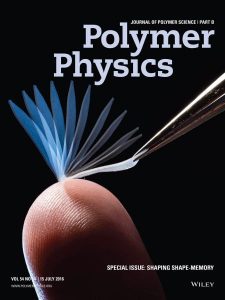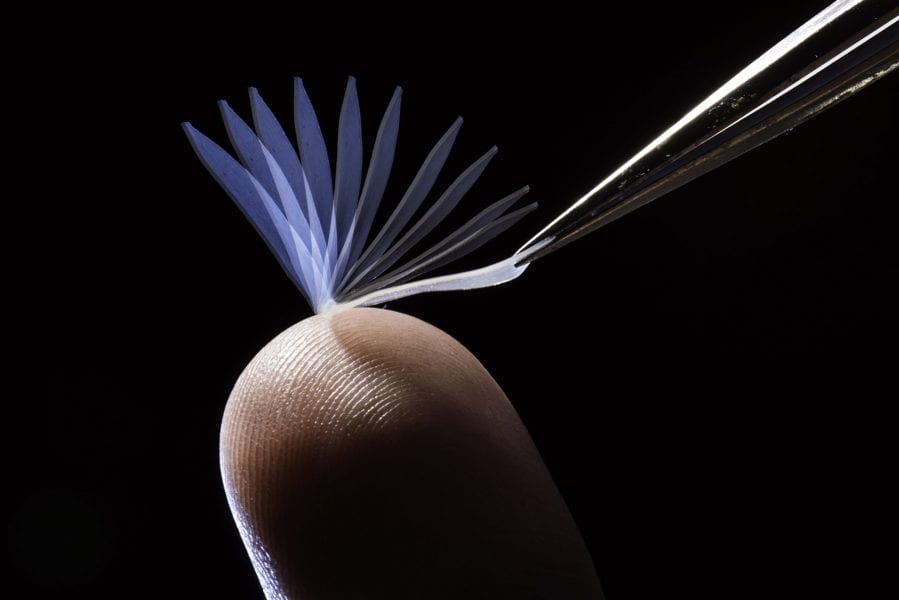 The Journal of Polymer Science Part B: Polymer Physics has published a special issue on shape-memory polymers. The special issue, called “Shaping Shape-Memory”, was edited by Mitchell Anthamatten of the University of Rochester and Kevin Cavicchi of the University of Akron.
The Journal of Polymer Science Part B: Polymer Physics has published a special issue on shape-memory polymers. The special issue, called “Shaping Shape-Memory”, was edited by Mitchell Anthamatten of the University of Rochester and Kevin Cavicchi of the University of Akron.
Shape-memory polymers are a special class of “smart” polymers that have the ability to transform between a deformed shape and their original shape upon exposure to an external stimulus. Stretching the polymers during cooling fixes the material into a non-equilibrium shape, its deformed shape. The external trigger releases stored elastic energy, thereby allowing the polymer to relax into its equilibrium, or original, shape.
While the external trigger is typically temperature change, new triggers such as light, magnetic fields, and pH change have recently been demonstrated. Amazingly, some shape-memory polymers can retain up to three different memorized shapes.
Shape-memory polymers encompass a wide variety of polymer types, including liquid crystalline polymers, polymer-metal composites, ionic gels, conducting polymers, and more. The variety of polymers that exhibit shape-memory properties points towards a wide range of applications. Industrial applications include adaptive gripping materials for robots, sports wear, and temperature-dependent window sealants. In the medical field, researchers are examining shape-memory polymers for stents, implants, and sutures.
The 10 papers presented in this special issue offer a variety of forward-looking review articles as well as new experimental research into the rapidly evolving field of shape-memory polymers. Structure-property relationships and novel polymer types are addressed with an eye toward design, polymers capable of reversible transformations between previously encoded shapes and those with self-healing properties are examined, and industrial and medical applications are presented. This special issue provides a snapshot of the state of the field and a look toward the future of shape-memory polymers.

















